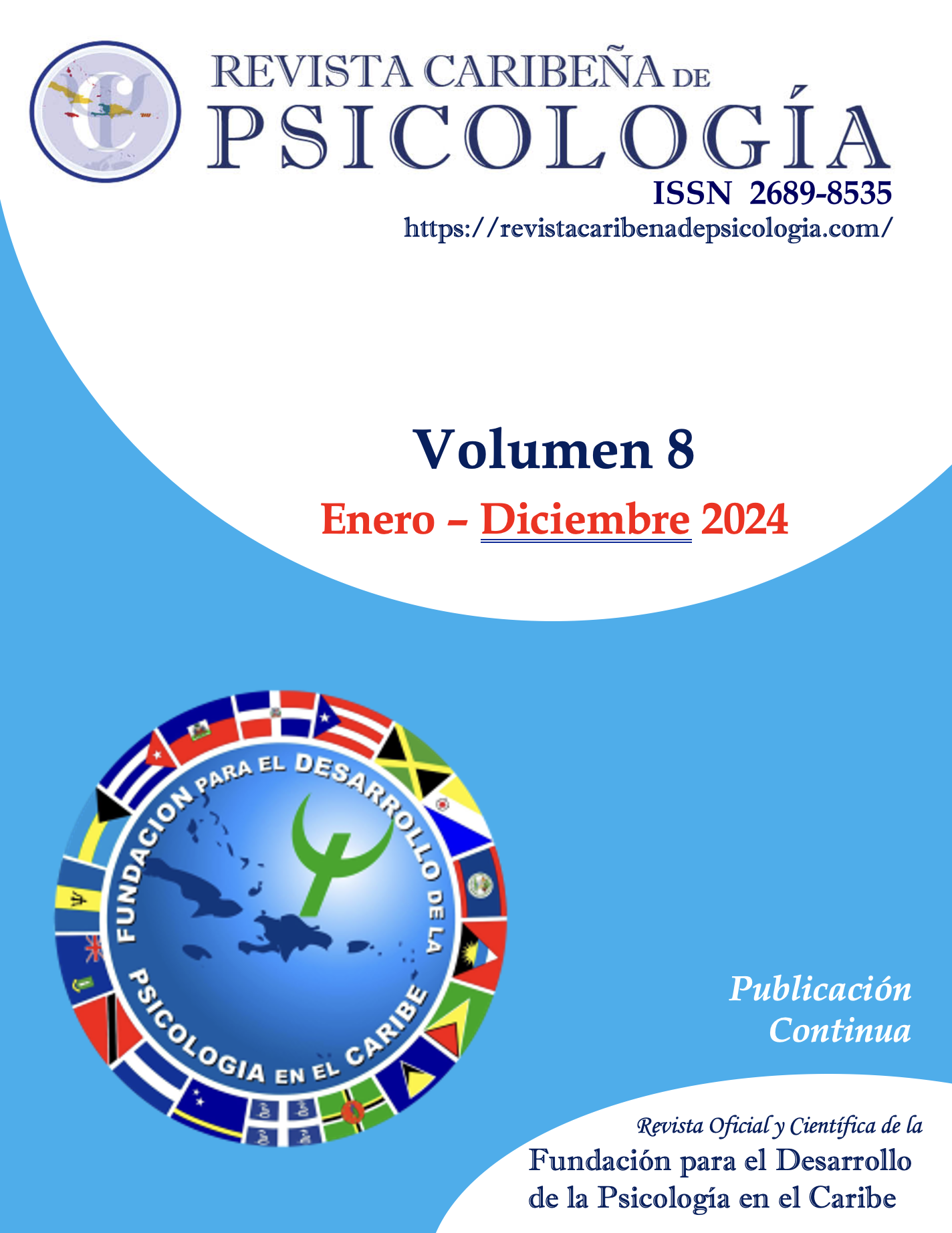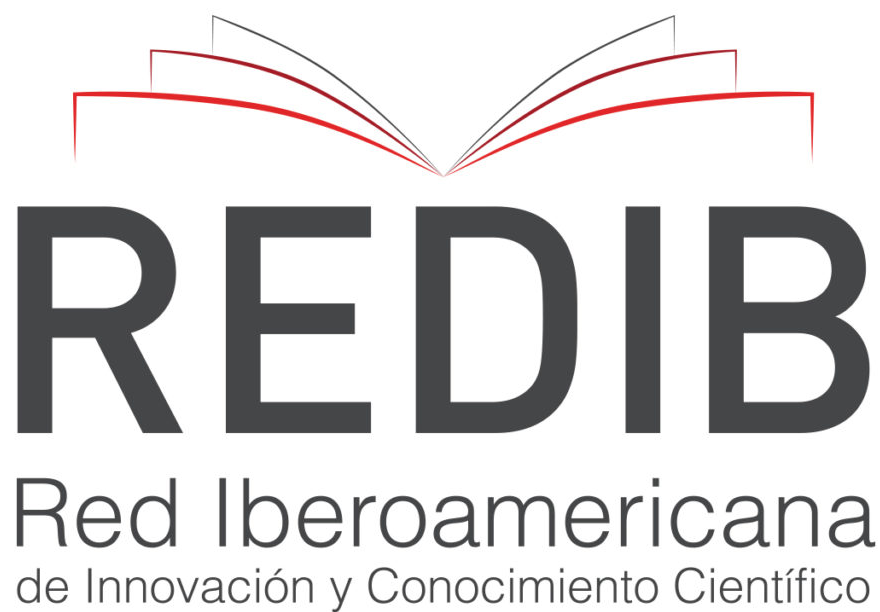Revisitando la Medición del Engagement en el Trabajo: Análisis de las Propiedades Psicométricas del UWES-3
DOI:
https://doi.org/10.37226/rcp.v8i1.7843Palabras clave:
engagement en el trabajo, Propiedades Psicométricas, Puerto Rico, UWES-3Resumen
Está comprobado que cuando los empleados están engaged en su trabajo, esto puede beneficiar tanto a las organizaciones como a los trabajadores. En la investigación del engagement en el trabajo, es esencial contar con herramientas científicas que proporcionen inferencias válidas y confiables. Una de las escalas más utilizadas para medir este constructo es la Utrecht Work Engagement Scale (UWES), que a lo largo de los años ha disminuido significativamente su número de ítems, pasando de 25 a solo 3 ítems. Por tanto, el propósito de este estudio es analizar las propiedades psicométricas de la versión ultracorta de la UWES de tres ítems a través del análisis secundario de datos de múltiples estudios con una muestra total de 4,782 participantes. Los resultados demuestran que la versión de tres ítems cuenta con las propiedades psicométricas necesarias para medir el engagement en el contexto laboral de Puerto Rico. En resumen, este estudio proporciona una herramienta de medición efectiva y sencilla para que las organizaciones puedan evaluar el engagement en su personal de manera confiable y eficaz.
Citas
Allen, M. S., Iliescu, D., & Greiff, S. (2022). Single item measures in psychological science: A call to action. European Journal of Psy-chological Assessment, 38(1), 1–5. https://doi.org.org/10.1027/1015-5759/a000699 DOI: https://doi.org/10.1027/1015-5759/a000699
Asif, M., Qing, M., Hwang, J., & Shi, H. (2019). Ethical leadership, affective commitment, work engagement, and creativity: Testing a multiple mediation approach. Sustainability, 11(16), 4489. https://doi.org/10.3390/su11164489 DOI: https://doi.org/10.3390/su11164489
Bakker, A. B. (2011). An evidence-based model of work engage-ment. Current Directions in Psychological Science, 20(4), 265–269. https://doi.org/10.1177/0963721411414534 DOI: https://doi.org/10.1177/0963721411414534
Bakker, A. B., & Demerouti, E. (2008). Towards a model of work engagement. The Career Development International, 13(3), 209–223. https://doi.org/10.1108/13620430810870476 DOI: https://doi.org/10.1108/13620430810870476
Bakker, A. B., & Demerouti, E. (2007). The Job Demands-Resources model: State of the art. Journal of Managerial Psy-chology, 22(3), 309–328. https://doi.org/10.1108/02683940710733115 DOI: https://doi.org/10.1108/02683940710733115
Bakker, A. B. (2010). Engagement and "job crafting": Engaged employees create their own great place to work. In S. L. Al-brecht (Ed.), Handbook of employee engagement: Perspectives, is-sues, research and practice (pp. 229–244). Edward Elgar Publish-ing. https://doi.org/10.4337/9781849806374.00027 DOI: https://doi.org/10.4337/9781849806374.00027
Bakker, A. B., & Demerouti, E. (2013). La teoría de las demandas y los recursos laborales. Journal of Work and Organizational Psy-chology, 29(3), 107–115. https://doi.org/10.5093/tr2013a16 DOI: https://doi.org/10.5093/tr2013a16
Bakker, A. B., Petrou, P., Op den Kamp, E. M., & Tims, M. (2020). Proactive vitality management, work engagement, and crea-tivity: The role of goal orientation. Applied Psychology, 69(2), 351–378. https://doi.org/10.1111/apps.12173 DOI: https://doi.org/10.1111/apps.12173
Balducci, C., Fraccaroli, F., & Schaufeli, W. B. (2010). Psychomet-ric properties of the Italian version of the Utrecht Work En-gagement Scale (UWES-9): A cross-cultural analysis. European Journal of Psychological Assessment, 26(2), 143-149. https://doi.org/10.1027/1015-5759/a000020 DOI: https://doi.org/10.1027/1015-5759/a000020
Browne, L. P., & D’Eloia, M. (2016). Toward a model of camp staff engagement: A look at university-based day camps. Journal of Park and Recreation Administration, 34(4), 5–19. https://doi.org/10.18666/JPRA-2016-V34-I4-7276 DOI: https://doi.org/10.18666/JPRA-2016-V34-I4-7276
Buckingham, M., & Coffman, C. (1999). First, break all the rules. What the world’s greatest managers do differently. Simon & Schuster.
Cortés-Denia, D., Lopez-Zafra, E., & Pulido-Martos, M. (2023). Physical and psychological health relations to engagement and vigor at work: A PRISMA-compliant systematic review. Current Psychology, 42(1), 765–780. https://doi.org/10.1007/s12144-021-01450-y DOI: https://doi.org/10.1007/s12144-021-01450-y
Choi, M., Suh, C., Choi, S. P., Lee, C. K., & Son, B. C. (2020). Vali-dation of the work engagement scale (UWES-3), used in the 5th Korean working conditions survey. Annals of Occupational and Environmental Medicine, 32(27). https://doi.org/10.35371/aoem.2020.32.e27 DOI: https://doi.org/10.35371/aoem.2020.32.e27
Demerouti, E., Bakker, A. B., de Jonge, J., Janssen, P. P. M., & Schaufeli, W. B. (2001). Burnout and engagement at work as a function of demands and control. Scandinavian Journal of Work, Environment & Health, 27(4), 279–286. https://doi.org/10.5271/sjweh.615 DOI: https://doi.org/10.5271/sjweh.615
Demerouti, E., & Cropanzano, R. (2010). From thought to action: Employee work engagement and job performance. In A. B. Bakker (Ed.) & M. P. Leiter, Work engagement: A handbook of essential theory and research (pp. 147–163). Psychology Press.
Domínguez-Salas, S., Rodríguez-Domínguez, C., Arcos-Romero, A.I., Allande-Cussó, R., García-Iglesias, J. J., & Gómez-Salgado, J. (2022). Psychometric properties of the Utrecht Work En-gagement Scale (UWES-9) in a sample of active health care professionals in Spain. Psychology Research and Behavior Man-agement, 15, 3461–3472. https://doi.org/10.2147/PRBM.S387242 DOI: https://doi.org/10.2147/PRBM.S387242
Drewery, D. (2019). Retaining contingent frontline staff through job enrichment: the case of seasonal student workers. Manag-ing Sport & Leisure, 24(6), 387–399. https://doi.org/10.1080/23750472.2019.1684835 DOI: https://doi.org/10.1080/23750472.2019.1684835
Fong, T.C., & Ng, S. (2012). Measuring engagement at work: Vali-dation of the Chinese version of the Utrecht Work Engage-ment Scale. International Journal of Behavioral Medicine, 19(3), 391-397. https://doi.org/10.1007/s12529-011-9173-6 DOI: https://doi.org/10.1007/s12529-011-9173-6
Frederick, D. E., & VanderWeele, T. J. (2020). Longitudinal meta-analysis of job crafting shows positive association with work engagement. Cogent Psychology, 7(1). https://doi-org/10.1080/23311908.2020.1746733 DOI: https://doi.org/10.1080/23311908.2020.1746733
Freeney, Y. M., y Tiernan, J. (2009). Exploration of the facilitators of and barriers to work engagement in nursing. International Journal of Nursing Studies, 46(12), 1557-1565. https://doi.org/10.1016/j.ijnurstu.2009.05.003 DOI: https://doi.org/10.1016/j.ijnurstu.2009.05.003
Froiland, J. M. (2015). Employee engagement. Research Starters Business. Great Neck Publishing.
Hai-Dong, L., Ya-Juan, Y., & Lu, L. (2022). In the context of COVID-19: The impact of employees’ risk perception on work engagement. Connection Science, 34(1), 1367–1383. https://doi.org/10.1080/09540091.2022.2071839 DOI: https://doi.org/10.1080/09540091.2022.2071839
Hallberg, U. E., & Schaufeli, W. B. (2006). "Same same" but differ-ent? Can work engagement be discriminated from job in-volvement and organizational commitment? European Psy-chologist, 11(2), 119-127. https://doi.org/10.1027/1016-9040.11.2.119 DOI: https://doi.org/10.1027/1016-9040.11.2.119
Harisa Putri, W. & Ronald Setianan, A. (2019). Job enrichment, organizational commitment, and intention to quit: the medi-ating role of employee engagement. Problems and Perspectives in Management, 17(2), 518–526. https://doi.org/10.21511/ppm.17(2).2019.40 DOI: https://doi.org/10.21511/ppm.17(2).2019.40
Harter, J. K., Schmidt, F. L., & Hayes, T. L. (2002). Business-unit-level relationship between employee satisfaction, employee engagement, and business outcomes: A meta-analysis. Journal of Applied Psychology, 87(2), 268-279. https://doi.org/10.1037/0021-9010.87.2.268 DOI: https://doi.org/10.1037//0021-9010.87.2.268
Hu, L. & Bentler, P. M. (1998). Fit indices in covariance structure modeling: Sensitivity to underparameterized model misspeci-fication. Psychological Methods, 3(4), 424–453. https://doi.org/10.1037/1082-989X.3.4.424 DOI: https://doi.org/10.1037//1082-989X.3.4.424
Jeong, D., Aggarwal, S., Robinson, J., Kumar, N., Spearot, A., & Park, D. S. (2023). Exhaustive or exhausting? Evidence on re-spondent fatigue in long surveys. Journal of Development Eco-nomics, 161. https://doi.org/10.1016/j.jdeveco.2022.102992 DOI: https://doi.org/10.1016/j.jdeveco.2022.102992
Kahn, W. A. (1990). Psychological conditions of personal engage-ment and disengagement at work. Academy of Management Journal, 33(4), 692-724. https://doi.org/10.2307/256287 DOI: https://doi.org/10.2307/256287
Kline, T. J. B. (2005). Psychological testing: A practical approach to design and evaluation. SAGE Publications. DOI: https://doi.org/10.4135/9781483385693
Leiter, M. P., & Bakker, A. B. (2010). Work engagement: Introduc-tion. In A. B. Bakker (Ed.) & M. P. Leiter. Work engagement: A handbook of essential theory and research (pp. 1–9). Psychology Press.
Lyu, X., & Fan, Y. (2022). Research on the relationship of work family conflict, work engagement and job crafting: A gender perspective. Current Psychology, 41(4), 1767–1777. https://doi.org/10.1007/s12144-020-00705-4 DOI: https://doi.org/10.1007/s12144-020-00705-4
Mansor, Z. D. & Hossan, D. (2021). Effect of team cohesion on employee engagement among the millennials in Malaysia. In-ternational Journal of Entrepreneurship, 25(4), 1-18. https://www.abacademies.org/articles/effect-of-team-cohesion-on-employee-engagement-among-the-millennials-in-malaysia-12592.html
Martin, P. (2017). Job performance and employee engagement: the validity of Utrecht work engagement scale (UWES-9). Journal of Social & Psychological Sciences, 10(2), 56–68. https://search-ebscohost-com.uapr.cobimet.org/login.aspx?direct=true&db=sih&AN=129242755&site=eds-live
Martínez-Lugo, M., Medina, C., Rodríguez-Polo, J., Del Toro, E., & Rosa, I. (2016). El liderazgo como promotor del engagement en el trabajo. Alternativas Cubanas en Psicología, 4(10), 114-118. https://www.researchgate.net/publication/291153123_El_liderazgo_como_promotor_del_engagement_en_el_trabajo
Martínez Lugo, M. & Rodríguez-Montalbán, R. (2016). Cuando el trabajo aburre: Análisis de las propiedades psicométricas de la Escala de Aburrimiento Laboral (EAL). Revista Interamericana de Psicología Ocupacional, 35(1), 7-20. https://doi.org/10.21772/ripo.v35n1a01 DOI: https://doi.org/10.21772/ripo.v35n1a01
Maslach, C., & Leiter, M. P. (2007). Burnout. In G. Fink (Ed.). Encyclopedia of Stress (2nd ed., pp. 358-362). Elsevier, Inc. https://doi.org/10.1016/B978-0-12-800951-2.00044-3 DOI: https://doi.org/10.1016/B978-0-12-800951-2.00044-3
Maslach, C., Schaufeli, W. B., & Leiter, M. P. (2001). Job burnout. Annual review of Psychology, 52(1), 397–422. https://doi.org/10.1146/annurev.psych.52.1.397 DOI: https://doi.org/10.1146/annurev.psych.52.1.397
Merino-Soto, C., Lozano-Huamán, M., Lima-Mendoza, S., Calderón de la Cruz, G., Juárez-García, A., & Toledano-Toledano, F. (2022). Ultrashort version of the utrecht work engagement scale (UWES-3): a psychometric assessment. In-ternational Journal of Environmental Research and Public Health, 19(2). https://doi-org/10.3390/ijerph19020890 DOI: https://doi.org/10.3390/ijerph19020890
Metin, U. B., Taris, T. W., Peeters, M. C. W., Korpinen, M., Smrke, U., Razum, J., Kolářová, M., Baykova, R., & Gaioshko, D. (2020). Validation of the procrastination at work scale: A sev-en-language study. European Journal of Psychological Assess-ment, 36(5), 767–776. https://doi.org/10.1027/1015-5759/a000554 DOI: https://doi.org/10.1027/1015-5759/a000554
Mills, M., Culbertson, S., & Fullagar, C. (2011). Conceptualizing and measuring engagement: An análisis of the Utrecht Work Engagement Scale. Journal of Happiness Studies, 13(3), 1-27. https://doi.org/10.1007/s10902-011-9277-3 DOI: https://doi.org/10.1007/s10902-011-9277-3
Muilenburg-Treviño, E. (2009). A psychometric study of work en-gagement in an american sample. [Doctoral dissertation]. Oklahoma State University, Oklahoma.
Müller Gilchrist, R., Pérez Villalobos, C. E., & Ramírez Fernández, L. (2013). Estructura factorial y consistencia interna de la Utrech Work Engagement Scale (Uwes) 17 entre trabajadores sanitarios de Chile. Liberabit, 19(2), 163–171. http://www.scielo.org.pe/scielo.php?script=sci_arttext&pid=S1729-48272013000200002&lng=es&tlng=es
Nerstad, C. G. L., Richardsen, A. M., & Martinussen, M. (2010). Factorial validity of the Utrecht Work Engagement Scale (UWES) across occupational groups in Norway. Scandinavian Journal of Psychology, 51, 326-333. https://doi.org/10.1111/j.1467-9450.2009.00770.x DOI: https://doi.org/10.1111/j.1467-9450.2009.00770.x
Nunnally, J. C., & Bernstein, I. H. (1994). Psychometric theory (3rd ed.). McGrawHill.
Peláez Zuberbühler, M. J., Coo Calcagni, C., Martínez, I. M., & Salanova, M. (2023). Development and validation of the coaching-based leadership scale and its relationship with psy-chological capital, work engagement, and performance. Cur-rent Psychology, 42(1), 648–669. https://doi.org/10.1007/s12144-021-01460-w DOI: https://doi.org/10.1007/s12144-021-01460-w
Phong Thai, K., Tho To, A., Siem Tran, T., Trung Hoang, V. & Thu Hong Ho, T. (2023). How job crafting transmits the impact of perceived organizational support and autonomy on work en-gagement. TEM Journal, 12(1), 316–323. https://doi.org/10.18421/TEM121-40 DOI: https://doi.org/10.18421/TEM121-40
Richman, A. (2006). Everyone wants an engaged workforce how can you create it? Workspan, 49(1), 36-39. https://www.yumpu.com/en/document/read/39469632/everyone-wants-an-engaged-workforce-how-can-wfd-consulting
Rodríguez-Montalbán, R. (2011). Análisis de las propiedades psicomé-tricas de la escala de la Utrecht Work Engagement Scale en un gru-po de empleados en Puerto Rico. [Disertación doctoral]. Univer-sidad Carlos Albizu, San Juan, PR.
Rodríguez-Montalbán, R., Martínez-Lugo, M., & Sánchez-Cardona, I. (2014). Análisis de las propiedades psicométricas de la Utrecht Work Engagement Scale en una muestra de tra-bajadores en Puerto Rico. Universitas Psychologica, 13(4), 1255-1266. https://doi.org/10.11144/Javeriana.UPSY13-4.appu DOI: https://doi.org/10.11144/Javeriana.UPSY13-4.appu
Rodríguez-Montalbán, R., Martínez-Lugo, M., & Salanova-Soria, M. (2014b). Justicia organizacional, engagement en el trabajo y comportamientos de ciudadanía organizacional: una combi-nación ganadora. Universitas Psychologica, 13(3), 961-974. https://doi.org/10.11144/Javeriana.UPSY13-3.joet DOI: https://doi.org/10.11144/Javeriana.UPSY13-3.joet
Salanova, M., Schaufeli, W. B., Llorens, S., Peiró, J. M. y Grau, R. (2000). Desde el ‘burnout’ al ‘engagement’: ¿una nueva pers-pectiva? Revista de Psicología del Trabajo y de las Organizaciones, 16, 117-134. https://doi.org/10.1177/0022022102033005003 DOI: https://doi.org/10.1177/0022022102033005003
Salanova, M., & Schaufeli, W. (2009). El engagement en el trabajo: Cuando el trabajo se convierte en pasión. Alianza Editorial.
Schaufeli, W.B. (2012). Work engagement: What do we know and where do we go? Romanian Journal of Applied Psychology, 14(1), 3-10. https://www.researchgate.net/publication/230580677_Work_Engage-ment_What_Do_We_Know_and_Where_Do_We_Go_Work_Engagement_in_Everyday_Life_Business_and_Academia
Schaufeli, W.B. (2015). Engaging leadership in the job demands-resources model. Career Development International, 20(5), 446-463. https://doi.org/10.1108/CDI-02-2015-0025 DOI: https://doi.org/10.1108/CDI-02-2015-0025
Schaufeli, W.B., Bakker, A.B. & Salanova, M. (2006). The meas-urement of work engagement with a short questionnaire: a cross-national study. Educational and Psychological Measure-ment, 66(4), 701-716. https://doi.org/10.1177/0013164405282471 DOI: https://doi.org/10.1177/0013164405282471
Schaufeli, W. B., & Salanova, M. (2014). Burnout, boredom, and engagement at the workplace. In M. C. W. Peeters, J. de Jonge, & T. W. Taris (Eds.). An Introduction to Contemporary Work Psychology (pp. 293-320). Wiley-Blackwell.
Schaufeli, W.B., Salanova, M., González-Romá, V. & Bakker, A.B (2002). The measurement of engagement and burnout: A two sample confirmatory factor analytic approach. Journal of Hap-piness Studies: An Interdisciplinary Forum on Subjective Well-Being, 3(1), 71-92. https://doi.org/10.1023/A:1015630930326 DOI: https://doi.org/10.1023/A:1015630930326
Schaufeli, W. B., Shimazu, A., Hakanen, J., Salanova, M. & De Witte, H. (2019). An ultra-short measure for work engage-ment. European Journal of Psychological Assessment, 35(4), 577–591. https://doi.org/10.1027/1015-5759/a000430 DOI: https://doi.org/10.1027/1015-5759/a000430
Sëppäla, P., Mauno, S., Feldt, T., Hakanen, J., Kinnunen, U., Tol-vanen, A., et al. (2009). The construct validity of the Utrecht Work Engagement Scale: Multisample and longitudinal evi-dence. Journal of Happiness Studies, 10(4), 459-481. https://doi.org/10.1007/s10902-008-9100-y DOI: https://doi.org/10.1007/s10902-008-9100-y
Shimazu, A. A., Schaufeli, W. B., Kosugi, S. S., Suzuki, A. A., Nashiwa, H. H., Kato, A. A., & ... Goto, R. R. (2008). Work en-gagement in Japan: Validation of the Japanese version of the Utrecht Work Engagement Scale. Applied Psychology: An Inter-national Review, 57(3), 510-523. https://doi.org/10.1111/j.1464-0597.2008.00333.x DOI: https://doi.org/10.1111/j.1464-0597.2008.00333.x
Spontón, C., Medrano, L. A., Maffei, L., Spontón, M., & Castella-no, E. (2012). Validación del cuestionario de Engagement UWES a la población de trabajadores de Córdoba, Argentina. Liberabit, 18(2), 147-154. Recuperado de http://www.scielo.org.pe/scielo.php?script=sci_arttext&pid=S1729-48272012000200005&lng=es&tlng=es
Steffens, N.k., Yang, J., Jetten, J., Haslam, S.A., & Lipponen, J. (2018). The unfolding impact of leader identity entrepreneur-ship on burnout, work engagement, and turnover intentions. Journal of Occupational Health Psychology, 23(3), 373-387. https://doi.org/10.1037/ocp0000090 DOI: https://doi.org/10.1037/ocp0000090
Storm, K., & Rothmann, S. (2003). A psychometric analysis of the Utrecht Work Engagement Scale in the South African police service. SA Journal of Industrial Psychology, 29(4). https://doi.org/10.4102/sajip.v29i4.129 DOI: https://doi.org/10.4102/sajip.v29i4.129
Teles, H., Ramalho, N., Ramalho, V., & Ribeiro, S. (2017). Adapta-tion and validation of the Utrecht Work Engagement Scale (UWES) applied to social workers in Portugal. Revista Portu-guesa De Investigação Comportamental E Social, 3(2), 10–20. https://doi.org/10.7342/ismt.rpics.2017.3.2.52 DOI: https://doi.org/10.7342/ismt.rpics.2017.3.2.52
Tims, M., Bakker, A.B., & Xanthopoulou, D. (2011). Do transfor-mational leaders enhance their followers daily work engage-ment? The Leadership Quarterly, 22(1), 121-131. https://doi.org/10.1016/j.leaqua.2010.12.011 DOI: https://doi.org/10.1016/j.leaqua.2010.12.011
Tomás, J. M., de los Santos, S., Georgieva, S., Enrique, S., & Fer-nández, I. (2018). Utrecht work engagement scale in Domini-can teachers: Dimensionality, reliability, and validity. Journal of Work and Organizational Psychology, 34(2), 89-93. https://doi.org/10.5093/jwop2018a11 DOI: https://doi.org/10.5093/jwop2018a11
Tripiana, J., & Llorens, S. (2015). Fomentando empleados engaged: el rol del líder y de la autoeficacia. Anales de la Psicología, 31(2), 636-644. https://doi.org/10.6018/analesps.31.2.179561 DOI: https://doi.org/10.6018/analesps.31.2.179561
VanderWeele, T. J. (2017). On the promotion of human flourish-ing. Proceedings of the National Academy of Sciences USA, 114(31), 8148–8156. https://doi.org/10.1073/pnas.1702996114 DOI: https://doi.org/10.1073/pnas.1702996114
Vásquez Pailaqueo, M.P, Inostroza Naranjo, R. F. y Acosta An-tognoni, H. (2021). Liderazgo transformacional: su impacto en la confianza organizacional, work engagement y desempeño laboral en trabajadores millennials en Chile. Revista de Psicolo-gía (Santiago), 30(1), 1-17. https://doi.org/10.5354/0719-0581.2021.55066 DOI: https://doi.org/10.5354/0719-0581.2021.55066
Wefald, A. J., & Downey, R. G. (2009). Construct dimensionality of engagement and its relation with satisfaction. Journal of Psychology: Interdisciplinary and Applied, 143(1), 91-111. https://doi.org/10.3200/JRLP.143.1.91-112 DOI: https://doi.org/10.3200/JRLP.143.1.91-112
Xanthopoulou, D., Bakker, A. B., Kantas, A. & Demerouti, E., (2012). Measuring burnout and work engagement: Factor structure, invariance, and latent mean differences across Greece and the Netherlands. International Journal of Business Science & Applied Management, 7(2), 40-52. https://doaj-org.uapr.cobimet.org/article/8c8a40d438814ba0b926e4f8f4b0b081 DOI: https://doi.org/10.69864/ijbsam.7-2.86
Ziegler, M., Kemper, C. J., & Kruyen, P. (2014). Short scales – Five misunderstandings and ways to overcome them. Journal of Individual Differences, 35(4), 185–189. https://doi.org/10.1027/1614-0001/a000148 DOI: https://doi.org/10.1027/1614-0001/a000148
Descargas
Publicado
Cómo citar
Número
Sección
Licencia
Derechos de autor 2024 Clara González-Seda, Ramón Rodríguez-Montalbán, Miguel E. Martínez-Lugo

Esta obra está bajo una licencia internacional Creative Commons Atribución 4.0.







